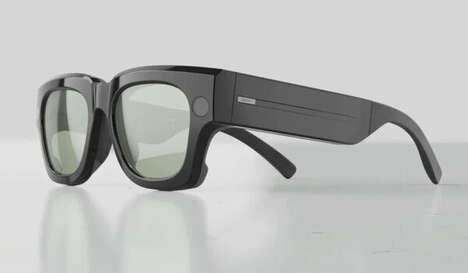Decoding Customer Experience
An Interview with Joey Edwards-Lebair, Senior Manager of Customer Insights at Zendesk
 In the fast-paced world of customer experience, staying ahead of the curve is not just an advantage—it's a necessity. Enter Joey Edwards-Lebair, Senior Manager of Customer Insights at Zendesk, a man who doesn't just ride the waves of innovation, but helps create them. With a penchant for spotting trends before they become mainstream and a knack for translating technical jargon into actionable insights, Edwards-Lebair is at the forefront of shaping how businesses interact with their customers in the digital age. In this candid conversation, we dive deep into the mind of a trend forecaster who isn't afraid to champion half-baked ideas or ask about your worst customer service nightmares.
In the fast-paced world of customer experience, staying ahead of the curve is not just an advantage—it's a necessity. Enter Joey Edwards-Lebair, Senior Manager of Customer Insights at Zendesk, a man who doesn't just ride the waves of innovation, but helps create them. With a penchant for spotting trends before they become mainstream and a knack for translating technical jargon into actionable insights, Edwards-Lebair is at the forefront of shaping how businesses interact with their customers in the digital age. In this candid conversation, we dive deep into the mind of a trend forecaster who isn't afraid to champion half-baked ideas or ask about your worst customer service nightmares. 1. Tell us your name and a little bit about your role at Zendesk.
My name is Joey Edwards-Lebair. I work at Zendesk as a Senior Manager of Customer Insights. My role is to identify the trends and innovations shaping the customer experience and customer service space, and provide a point of view on what that means for companies and what they need to do now.
2. How are you enjoying Future Festival?
Future Festival has been great. I've loved all the presentations. It's been great networking with other peers in the innovation and trends space and just sharing where they're at and what their challenges are. I'm walking away with so many different learnings.
3. Who's been your favorite keynote speaker so far?
I really enjoyed Sean's presentation just now on the technology trends that are shaping things. That was a great presentation, but it's hard to choose because they've all been great.
4. What do you think your biggest takeaway has been?
My biggest takeaway so far from Future Festival has been seeing how excited people are to adopt AI and where they are in their journey. Some folks are a little bit earlier on, some folks are a little bit later on. But there's definitely a consensus that everyone needs to be adopting and innovating with these AI features.
5. What does innovation mean to you?
Innovation means to me that you need to be moving fast to experiment and test new things. I think it also means that you're consistently pushing new ideas and thinking in your organization and reinforcing those ideas, saying them over and over again and getting on your soapbox - probably driving people a bit mad by saying the same things over. But it takes some time to really get new ideas through to others in your organization.
6. How does your team generate new ideas?
We tend to do a lot of digital whiteboarding because we're spaced all over the place. I think it's really important for our team to take the time to make sure we're speaking with and interviewing other leaders in our space about what their challenges and pain points are, and doing the same thing for consumers - how they're feeling and reacting to technology.
I love to ask people, "What's the worst customer service experience they've had in the past six months?" As you do start to see, certain things bubble up, and it's a really great way to see where behaviors are. I also really love chatting with deep technical experts because they're the ones who are really doing the cool work that will shape the future. They're sometimes way too technical, and the jargon is confusing, but there are some nuggets in there that talk about what technology will actually be taking hold of and influencing things down the line.
7. Do you have any specific rituals for resetting your team to be creative?
Yes, one big thing that we try to encourage in our team when it's brainstorming or ideating is to get the first layer of thoughts out there that are the blockers in your brain. I always like to say that you have three levels of ideas: the ones on the surface you just need to get out of the way. Sometimes, they're a little bit more simplistic or things you don't have fully formed. Get those gone first, and then you'll start to be able to get to the deeper insights and ideas.
I also encourage people to share half-baked ideas when we're working in the innovation and trends space. A lot of times, you're trying to focus on things that will be impacting the future in three months, six months, and a year out, and that can be challenging. I encourage people to share half-baked ideas. Someone else on your team might add to that incomplete thought and bring a great idea to life.
8. How do you identify trends? What resources does your team use to spot trends and consumer insights?
There have been so many great apps that now help identify news. My favorite one, Artifact, is no longer around, but there have been some really nice ones that can curate specific things happening in your industry. I dedicate a few apps like Flipboard and Other Web to work news, so the algorithm only shows me news related to that. We also check out trend reports from Trend Hunter. We take a look at those reports to see what's going on. And I also love Exploding Topics.
9. What is the biggest challenge you face when innovating?
I think the biggest challenge that we face when innovating is trying to identify what the trends will be in the future. It's really easy to talk about things that have happened in the past, but how do you take everything that you're learning and hearing from consumers, from leaders, from those technical experts and say, what is this going to actually mean in a year's time that you need to start thinking and planning for now? So, I think putting a stake in the ground and seeing what the future will look like is the trickiest thing.
10. Has there ever been an instance where another industry has influenced an innovation at Zendesk?
Absolutely. It's a bit of a meta question for me because we work in the customer experience and service technology space. Still, I love to pay attention specifically to what's happening in the retail space, particularly online, because they're often the first ones that are adopting more emerging technologies. And I love paying attention to what's happening in the fast food space, particularly the in-store space, because, again, they're oftentimes the first ones adopting this technology.
It's not so much to me about what technology they're adopting or using; it's about how consumers react to that technology. So, how do they feel about the kiosk in all of their fast food restaurants or being able to order their favorite burger with a voice agent? And it's interesting because that's where you start to see consumer behaviors align for long-term use that will shape other industries. So, I'm always watching those two industries first.
References: zendesk, futurefestival


